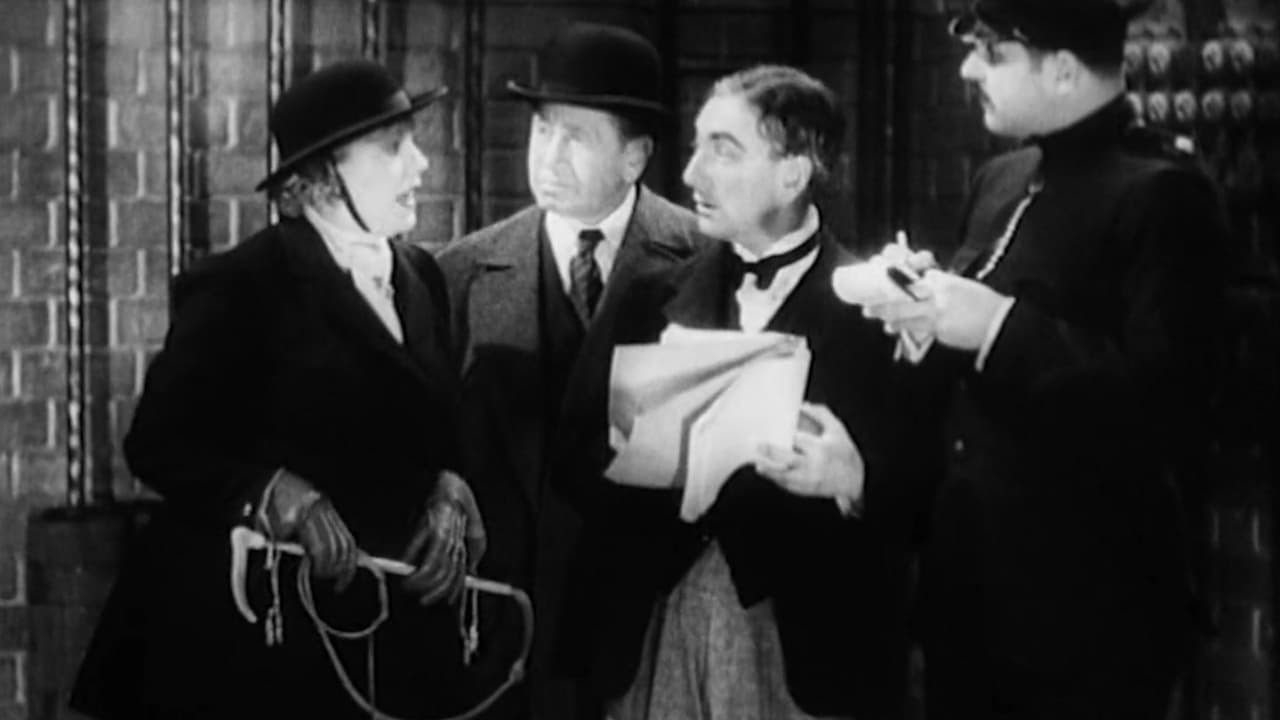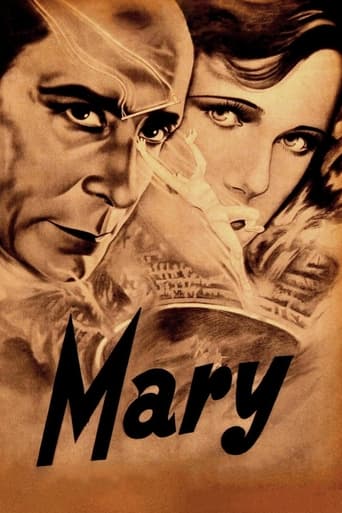SparkMore
n my opinion it was a great movie with some interesting elements, even though having some plot holes and the ending probably was just too messy and crammed together, but still fun to watch and not your casual movie that is similar to all other ones.
ThedevilChoose
When a movie has you begging for it to end not even half way through it's pure crap. We've all seen this movie and this characters millions of times, nothing new in it. Don't waste your time.
PiraBit
if their story seems completely bonkers, almost like a feverish work of fiction, you ain't heard nothing yet.
Robert Joyner
The plot isn't so bad, but the pace of storytelling is too slow which makes people bored. Certain moments are so obvious and unnecessary for the main plot. I would've fast-forwarded those moments if it was an online streaming. The ending looks like implying a sequel, not sure if this movie will get one
kekseksa
I am never entirely decided which out of John Ford and Alfred Hitchcock should be regarded as the most hugely over-rated director of all time. Sometimes I tend one way, sometimes the other.It is not that Hitchcock did not make some very fine films; evidently he did. But he made some rather poor films too, particularly at the beginning and during the long end of his career. And even some of his good films are in doubtful taste and overly reliant on trademark gimmicks. The sycophantic attitude adopted by his admirers (the gullible idolator François Truffaut en tête) bear witness as much as anything to to his dominant personality and extraordinary talents as a self-publicist.Neither the 1930 British version of this film nor the German version (shot simultaneously but only released in 1931) are very good. According to one reviewer the Germans would have liked more changes and this I can well believe. Hitchcock, who had learned most of what he knew from German film-makers really does not take advantage of the opportunity to be more adventurous in his cinematography and mise en scène in the way that marks the films of the great German directors up to this time (a golden age soon alas to be robbed of its glitter by the folly and philistinism of one Herr Hitler). Using German technical skills, he could have made a much superior version of this film.Some changes the Germans did get. The British version is very seriously by the extremely unpleasant racist and homophobic tone of its conclusion (the villain being very clearly marked as a half-caste pansy to be ostracised on both accounts). As, to my astonishment - how protective people are of their icons! - only one reviewer to date seems to have pointed out, these unpleasant elements are removed in the German version. The character still works as an acrobat en travesti but the notion that he is homosexual (derived from the Dane novel) is hardly there at all and his motive for murder is no longer to conceal that he had "black blood" as in the English version (a notion that did not horrify the German public who, even under Hitler and whatever Hitler may have thought of it, gave a hugely warm and enthusiastic welcome to the athlete Jesse Owens five years later as Owens himself would testify sardonically on his return to a segregated USA. In this version Fane is simply an ex-convict wishing to conceal his criminal past.It is easy to read history backwards in the manner of the egregious Siegfried Kracauer and forget that the Weimar period in Germany was in fact notable for its broad-mindedness (films treating homosexuality with sympathy such as Oswald's Anders als die Andern - which is also a plea for a change in the law - Dreyer's Michaêl or Dieterle's Geschlecht in Fesseln simply could not have been made at all in Britain at this time) and its multiculturalism. When the anti-semitic British short-story Saki had imagined a German invasion of Britain in his 1913 novel When William Came, what he feared most was not militarism or autocracy but the spread of a "cosmopolitan" culture (typically a euphemism for "jew" at the time) that would undermine the British identity.Regarding Hitchcock and race, how many African American faces can you recall seeing in all the films that "the Master" made in the US, a period that included the life and death of Martin Luther King, the Civil Right movement, the Johnsonian legislation that transformed US society, the heyday of Mohamed Ali, the Black Panther movement?So these important changes to this film are a reminder that as late as 1931 racism and homophobia that was perfectly acceptable in Britain was considered inappropriate in Germany. Two years later, alas, and both German state and cinema would be in the hands of suicidal and homicidal fanatics. Quel gachis!
Hitchcoc
For all practical purposes, a remake, in German, of "Murder!" It is stark and frantic, but the plot is the same. The editing is flawed and so things do not move fluidly. Also, the actors seem more stiff and less interesting. It's as if Hitchcock felt he could give the German people a gift, but move on quickly. I agree that the tension is much less. The final scene is one of the most dramatic of any the master produced, but here it doesn't have quite the same impact. See it only if you wish to have a full view of early Hitchcock films. That was my motivation.
dbdumonteil
The Hitchcock/Truffaut book,which is actually a very long interview ,something like "the Beatles anthology" in pop music ,gives us many interesting informations about "Mary" ,a movie the master liked.Although he told Truffaut he detested the whodunits ,those riddles a la Agatha Christie,"Mary" featured "things we did for the first time":stream of consciousness,play in the play a la "Hamlet" references to transvestism and even hints at (veiled) homosexuality,which was a "crime" in Great Britain as it was in Germany at the time....That said,the story drags on a bit and the running time could have been boiled down to one hour,which would have enhanced the really good scenes: IT was Herbert Marshall's first talkie and the scene when he's shaving and thinking for a clue renews the way the detective investigates.The unfinished manuscript is also a very good idea.But the bravura passage remains the final circus.One can also note the scene of the verdict we hear from the empty juror's room.There are elements which would appear later in Hitchcock's work: the theater ("Stage fright",also a whodunit,btw),of course "Psycho" (a man in drag) and "vertigo" (the finale which makes you feel dizzy).This is another early Hitchcock which is not only for completists.
suchenwi
I agree that "Mary" is weaker in several aspects that "Murder!", although they were produced in parallel on the same sets, just with different actors.But from the cinematic history point of view, to have both versions (such parallel movies were made only in a short time frame c. 1930-33, between introduction of sound, and the availability of post-production dubbing) allows some insight in the cultural differences.I read somewhere that the German actors wanted more changes made, but Hitchcock refused. One was obvious for me: the dark secret of the lover was not that he was "half-caste" (Murder!), but "an escaped convict" (Mary). And there may be more subtle ones.For entertainment, just watch "Murder!" (which also has a German dub by now). For earnest study of the parallel producing of movies, watch "Murder!" and then "Mary" as double-feature ...

